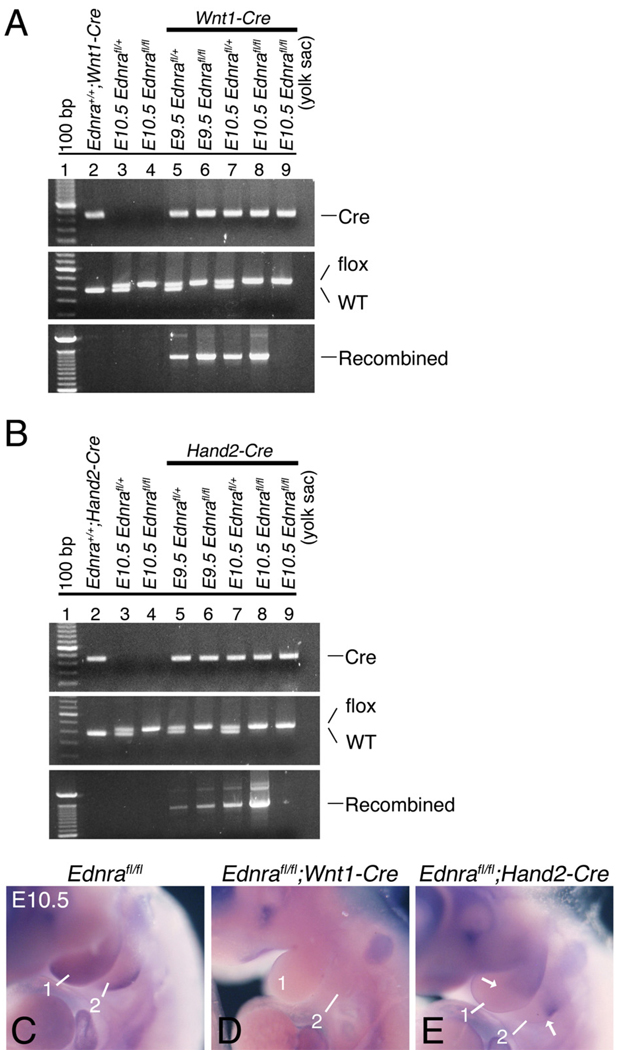Fig. 2.
Recombination of the Ednra conditional allele in the mandibular arch of E9.5 and E10.5 Ednrafl/fl;Wnt1-Cre and Ednrafl/fl;Hand2-Cre embryos. A, B. Agarose gels showing PCR-generated bands corresponding to presence of a Cre transgene (Cre), Ednrafl (flox) or Ednra wild type alleles and a recombined Ednrafl allele. DNA was isolated from the mandibular arch of E9.5 and E10.5 Ednrafl/+;Wnt1-Cre, Ednrafl/fl;Wnt1-Cre, Ednrafl/+;Hand2-Cre and Ednrafl/fl;Hand2-Cre embryos. Tail DNA from an adult Ednra+/+;Wnt1-Cre mouse and yolk sac DNA from E10.5 Ednrafl/fl;Wnt1-Cre and Ednrafl/fl;Hand2-Cre embryos were used as negative controls. Recombination of the Ednrafl allele is only observed in the presence of the Cre transgene. The presence of the flox band in all samples reflects the presence of cells in which the Wnt1-Cre or Hand2-Cre transgenes are not expressed. C–E. In situ hybridization analysis of conditional inactivation of the Ednra allele using a DIG-labeled probe that only detects the recombined allele. In E10.5 control embryos, Ednra expression can be seen throughout the mandibular (1) and second (2) arches, with highest expression in the distocaudal aspects (C). In Ednrafl/fl;Wnt1-Cre embryos, recombination of the conditional Ednra allele appears to have occurred throughout the pharyngeal arches (D). In Ednrafl/fl;Hand2-Cre embryos, conditional Ednra recombination is only observed in the distal half of the mandibular and second arches, corresponding to the area of Hand2 expression.

